The fin
Definitions
The fin and foil geometries are described as shown in figures 4 und 5.
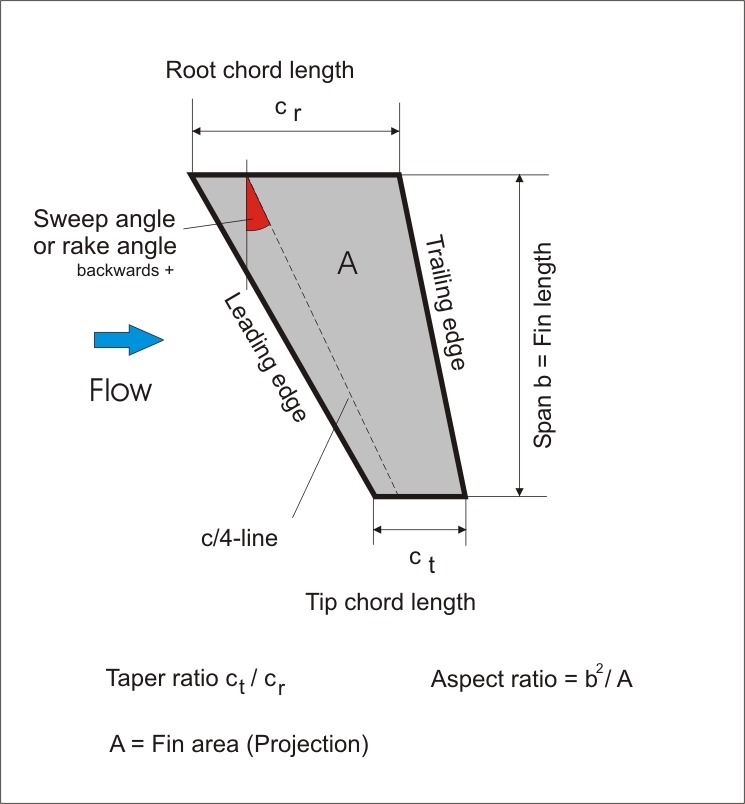
Figure 4: Fin parameters
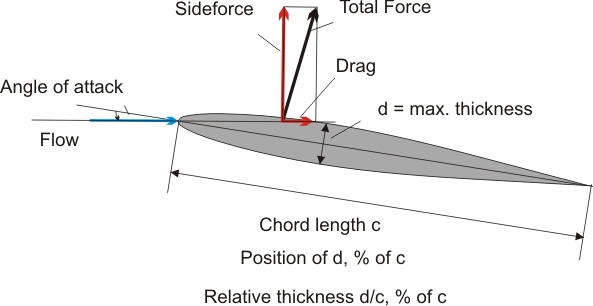
Figure 5: Foil parameters
These factors have affect on the fin efficiency: Fin lenght, taper ratio, aspect ratio, fin area, relative foil thickness, position of maximum thickness, foil nose radius and foil trailing edge angle.
Lift and Drag
How is the fin side force created?
As the fin is nothing but a small wing, we can use the same definitions as in aerodynamics. The forces created are lift and drag which also define the efficiency of the fin. Since the fin is placed vertically and not horizontally like a wing, the lift becomes a side force. Still, the general physics of produced forces is identical to the lift production of a wing.
The lift of a wing is created by inclining the wing foil against the airflow in a specific angle of attack (Figure 6). The flow around the fin is not symmetric. On the upper part of the foil, the flow must pass a longer way than on the lower part. As a result, the flow has to be quicker on the upper part providing a lower pressure compared to the lower part of the wing. The pressure difference produces the lift force. Lift is always combined with drag which depends on the foil geometry and friction of the water molecules on the surface of the fin.
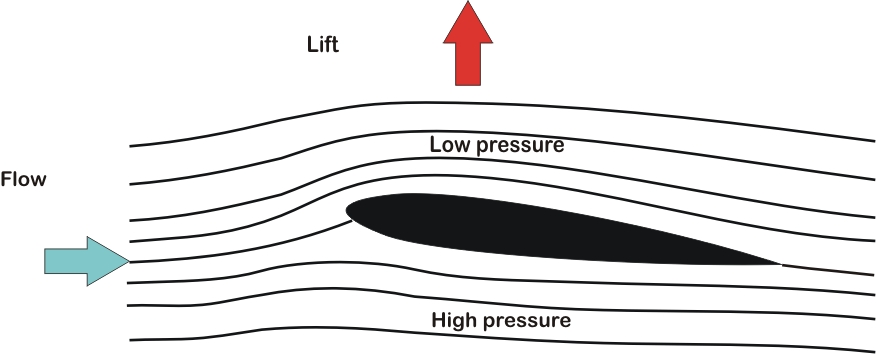
Figure 6: Streamlines and lift on a foil
The lift increases in a nearly linear fashion with the angle of attack until the angle becomes so great that the flow can’t follow the low pressure side of the fin and stalls (Figure 7). The lift ceases rendering the fin ineffective, that’s the so called spin-out.
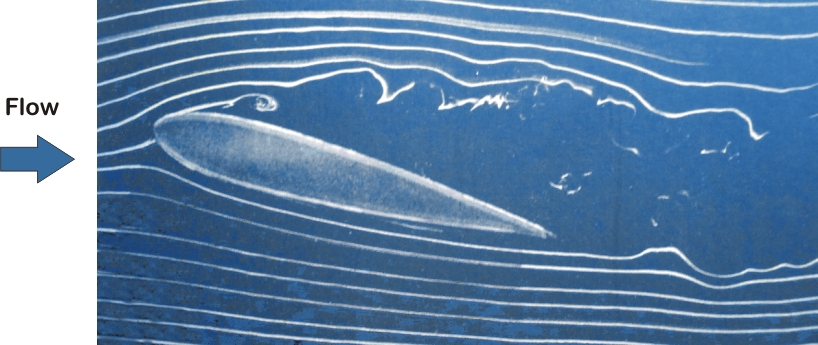
Figure 7: Stalling
It depends on the foil geometry up to which angle of attack the flow can follow the foil without stalling. Sharp nosed foils (= sharp leading edge) show an early flow separation, thick foils with more rounded noses have a greater angle of attack range.
Besides the lift, the foil geometry also defines the drag characteristics. Laminar foils, for example, produce very low drag for a narrow angle of attack region because the water flows without turbulences near the fin’s surface. This however requires a smooth foil surface with an intact leading edge.
The fin’s performance depends strongly on the Reynolds number (Re). Re gives a measure of the ratio of inertia forces to viscosity forces in a flow. The Reynolds number very much depends on the speed of flow which in turn is down to the surrounding medium. Meanwhile foils are available which produce good results also at fairly low Reynolds numbers (low speeds).
Foil Polars
Foil characteristics are represented in a lift vs. angle of attack graph. A comparison between different foils immediately reveals the different efficiencies. Figure 8 shows two different polars (A and B).
Both foils have the same linear lift curve slope when increasing the angle of attack. But with foil B, the flow separates at just 9 degrees of angle of attack (spin-out) while with foil A the flow separates much later at 13 degrees. Foil A therefore provides much more lift in general and also sufficient lift at low speeds. On top of this, it has a much better upwind performance.
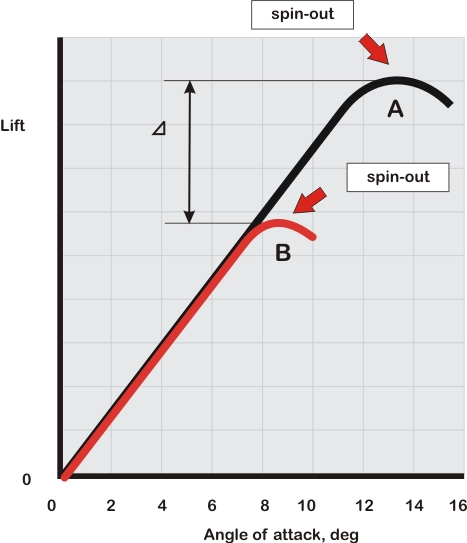
Figure 8: Foil polars
For the whole fin as a three dimensional wing, lift, drag and moments are proportional to:
- water density
- square of speed
- fin area
- angle of attack
- foil geometry
- fin geometry (outline).
Just like for a sail, the most important parameter is the fin area. A large area produces more lift but also more drag. Furthermore, the fin performance can be optimized by the fin geometry (outline).
Long, slender fins like slalom fins provide a good ratio of lift to drag, they are hydro dynamically very efficient (just like sailplanes with extremely large spans and slender wings). In order to avoid a spin-out, the fin area must be chosen in such a way that the required lift can be produced under all conditions without the danger of flow separation.
But there are also conditions where the fin is not completely in the water. The low pressure on the surface can suck air and a flow separation will follow (ventilation). Further, dynamical motions like radical manoeuvres with a lot of pressure to the board / fin can lead to a spin-out.
Apart from the general performance, we have to look at the sailing characteristics which are not only determined by the fin area but also the outline, the rake (sweep) and the stiffness of the fin
Spin-out
A flow separation (= stall) is called a spin-out in the windsurfing community. A stall on an airplane is usually terminal as once you stall you lose lift. To regain lift you must reduce the angle of attack plus have sufficient velocity to produce lift again. Very difficult when you’re falling out of the sky pointing upwards! The same is true for the windsurfer except it is much easier to reduce the angle of attack whilst maintaining speed thus regaining lift and sailing away happily. Airplanes use electronic flight control systems to control lift, velocity, angle of attack etc, the windsurfer makes dynamic alterations by intuition, feel and experience, much the same way as a bird limits stalling by natural talent.
Cavitation
Often the spin-out is incorrectly linked to cavitation. Yet, cavitation is a completely different physical phenomenon than flow separation. Cavitation can occur when the pressure on the foil falls below the vapour pressure of water. That means that the water becomes vaporized and small vapour bubbles (bubble cavitation) are created on the fin surface. The vapour bubbles lead to a loss in lift and drag increase. Cavitation can also occur at low angles of attack but very high speeds.
Stiffness, Flexibility and Torsion (Twist) (Figure 9)
Stiffness is determined by the elastic behaviour of the material. A fin load leads to a bending (flex) of the fin which influences the flow on the foil: The larger the bending, the bigger the difference to the ideal lift contribution. Bending results in a loss of lift (side force) and so performance is reduced. Bending or flex cannot be avoided with very long fins because there is no material with infinite stiffness. Still, there could be reasons to have some flex, to provide a smoother less harsh feeling of control, for example!
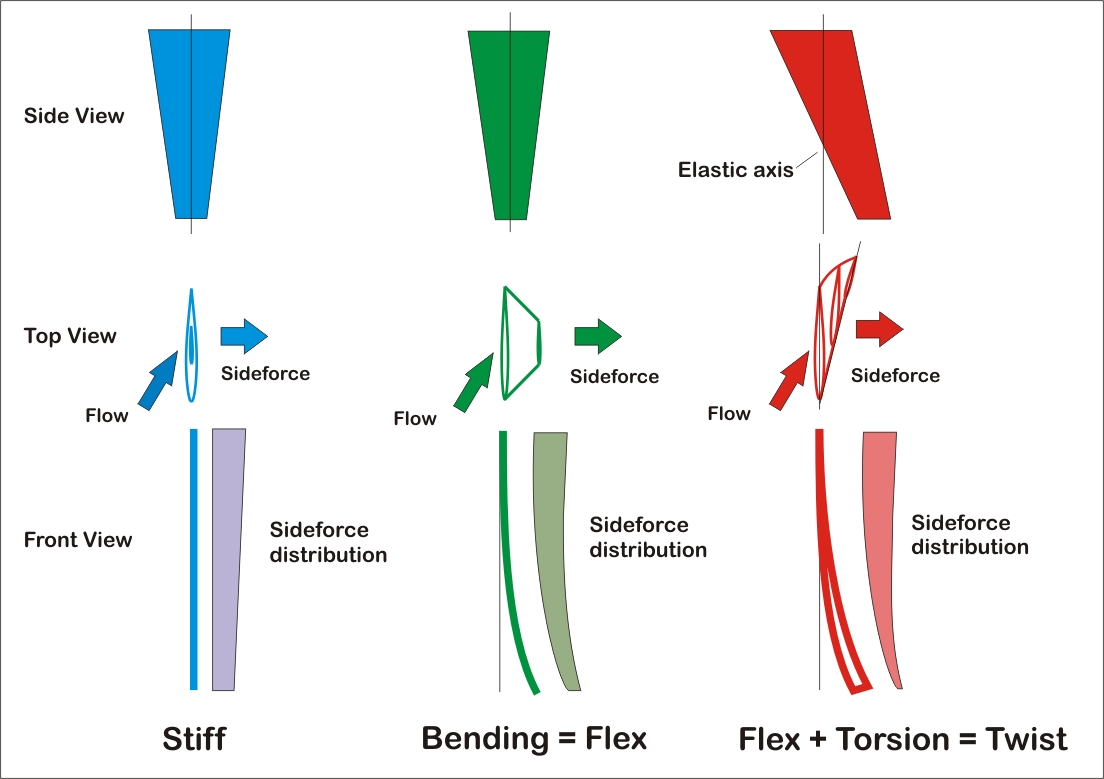
Figure 9: Stiffness, Bending (Flex) and Torsion (Twist)
Twist
Twist is torsion along the longitudinal axis of the fin. Twist is only possible when the fin is raked and the lift force acts off the elastic axis. Then a momentum is created.
In case of a positively raked fin, the foil at the tip of the fin is twisted into the flow so that the angle of attack is reduced. This can momentarily avoid a spin-out. In general though, twist reduces the performance of a fin.
Twist of a fin is identical to twist in a sail where a gust provides a twist just like more foot pressure causes a twist on a fin.
Fin and sailing characteristics
The previous principle considerations were relatively simple.
Nowadays, by using a GPS device you can comfortably measure how fast a board goes in any given direction and how good the upwind performance is. It is also fairly easy to identify the spin-out behaviour of a fin.
But it is much more difficult to come to an objective judgement on the sailing characteristics like controllability, agility in the waves or in moves. Those characteristics are influenced by the sail, the board, the fin, and depend a lot on the skills and personal preferences of the individual windsurfer. What one sailor experiences as agile, might be seen completely different by somebody else with a higher or lower skill level.
Fins can be tested in the same way as boards are tested by using adequate rating scales. Doing that, it is important to have the same board, the same sail, the same sailor, the same conditions and the same fin area.
Back: Introduction More: Conclusion
